HIV Prevalence and Associated Factors Among Men in South Africa 30 Years into the Epidemic: The Fifth Nationwide Cross‑Sectional Survey
We investigated HIV prevalence and associated factors among men ≥ 15 years in South Africa using data from a 2017 nationwide cross-sectional survey. HIV prevalence was 10.5% among 6 646 participants. Prevalence increased from 4.1% in the younger men (15–24 years), 12.5% in young men (25–34 years) to 12.7% in older men (≥ 35 years). Odds of being infected with HIV were […]
Gender, health and the Sustainable Development Goals
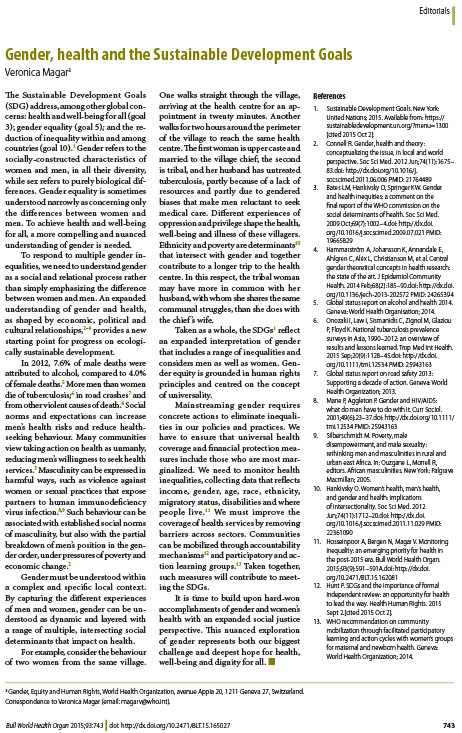
The Sustainable Development Goals (SDG) address, among other global concerns: health and well-being for all (goal 3); gender equality (goal 5); and the reduction of inequality within and among countries (goal 10). Gender refers to the socially-constructed characteristics of women and men, in all their diversity, while sex refers to purely biological differences. Gender equality […]
Pushing the boundaries of data to ensure gender equality across the life span
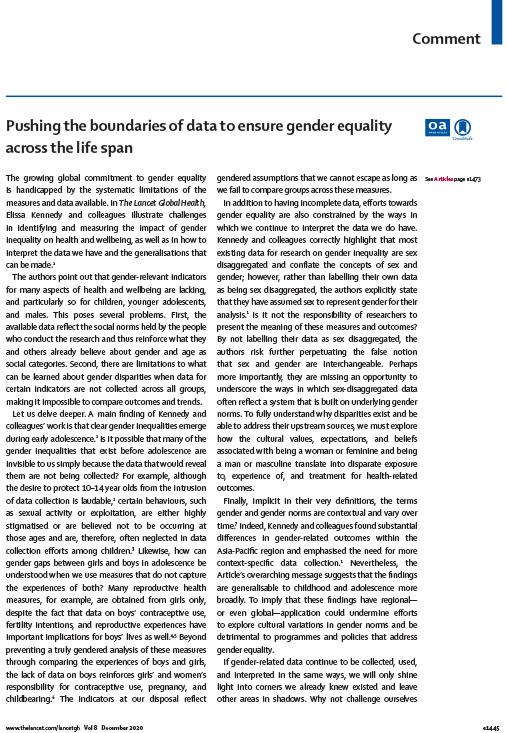
The growing global commitment to gender equality is handicapped by the systematic limitations of the measures and data available. In The Lancet Global Health, Elissa Kennedy and colleagues illustrate challenges in identifying and measuring the impact of gender inequality on health and wellbeing, as well as in how to interpret the data we have and the generalisations […]
A comparison of death recording by health centres and civil registration in South Africans receiving antiretroviral treatment
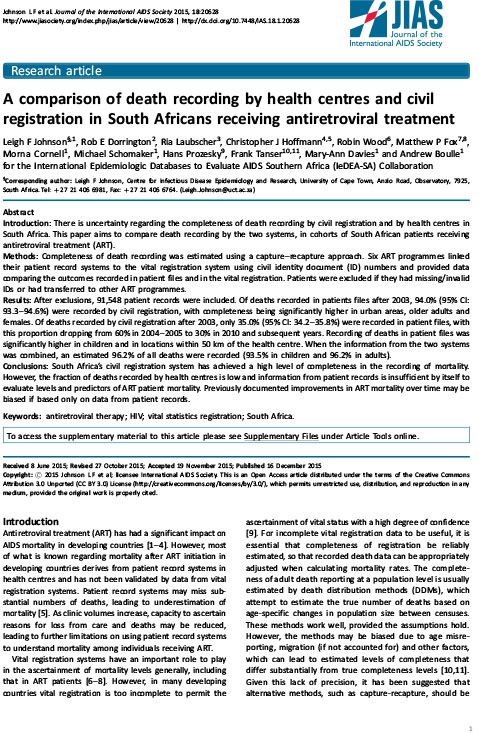
Introduction There is uncertainty regarding the completeness of death recording by civil registration and by health centres in South Africa. This paper aims to compare death recording by the two systems, in cohorts of South African patients receiving antiretroviral treatment (ART). Methods Completeness of death recording was estimated using a capture–recapture approach. Six ART programmes […]
Gender and sexuality: emerging perspectives from the heterosexual epidemic in South Africa and implications for HIV risk and prevention
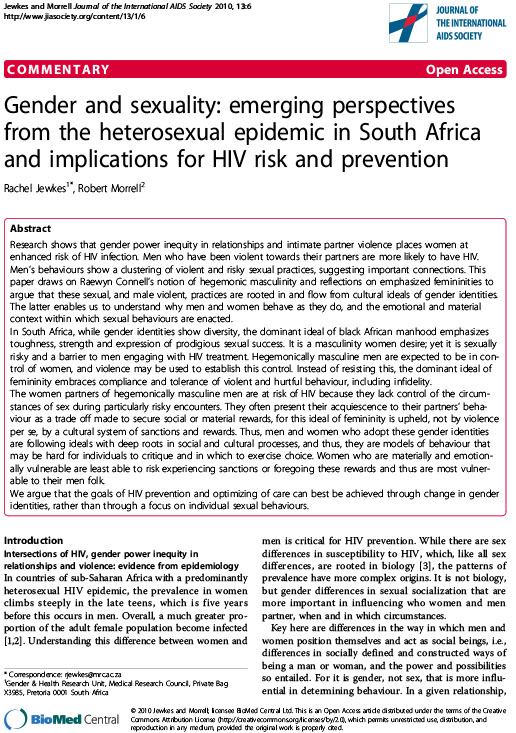
Research shows that gender power inequity in relationships and intimate partner violence places women at enhanced risk of HIV infection. Men who have been violent towards their partners are more likely to have HIV. Men’s behaviours show a clustering of violent and risky sexual practices, suggesting important connections. This paper draws on Raewyn Connell’s notion […]
Ten-year survival with analysis of gender difference, risk factors, and causes of death during 13 years of public antiretroviral therapy in rural Kenya
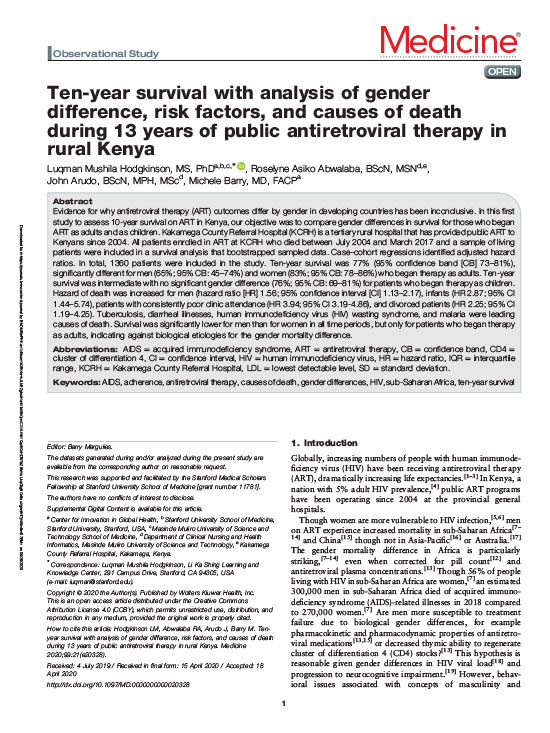
Evidence for why antiretroviral therapy (ART) outcomes differ by gender in developing countries has been inconclusive. In this first study to assess 10-year survival on ART in Kenya, our objective was to compare gender differences in survival for those who began ART as adults and as children. Kakamega County Referral Hospital (KCRH) is a tertiary […]
Rethinking Gender, Heterosexual Men, and Women’s Vulnerability to HIV/AIDS
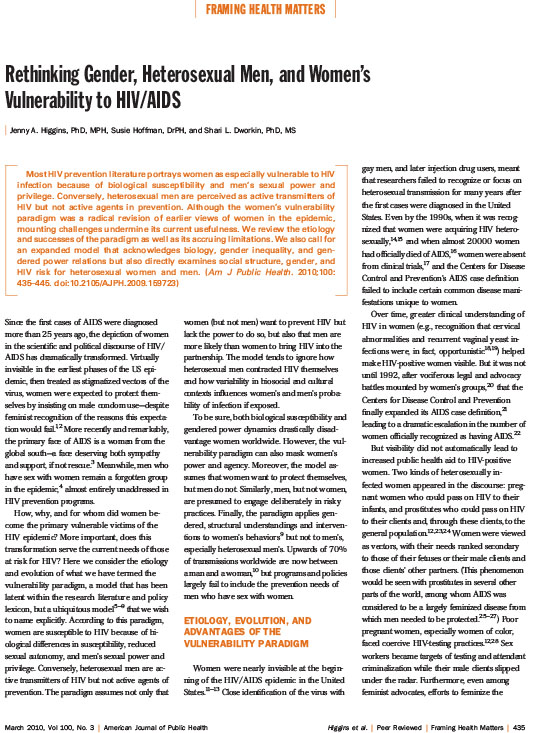
Most HIV prevention literature portrays women as especially vulnerable to HIV infection because of biological susceptibility and men’s sexual power and privilege. Conversely, heterosexual men are perceived as active transmitters of HIV but not active agents in prevention. Although the women’s vulnerability paradigm was a radical revision of earlier views of women in the epidemic, […]
‘He can’t say a man’s stuff to a woman…’: perspectives on the preferences of men living with HIV for gender concordant care workers in Cape Town, South Africa
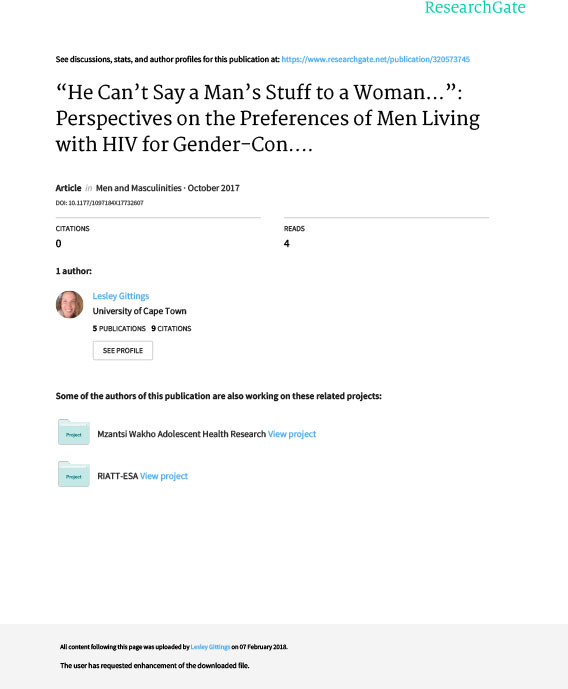
Community health workers (CHWs) play a central role in the provision of HIV care in South Africa, and people receiving such community-based adherence support have considerably better health outcomes. As with other forms of care work, the majority of CHWs are women. HIV vulnerability is also gendered, with women being more likely to contract HIV, […]
Gender myths in global health
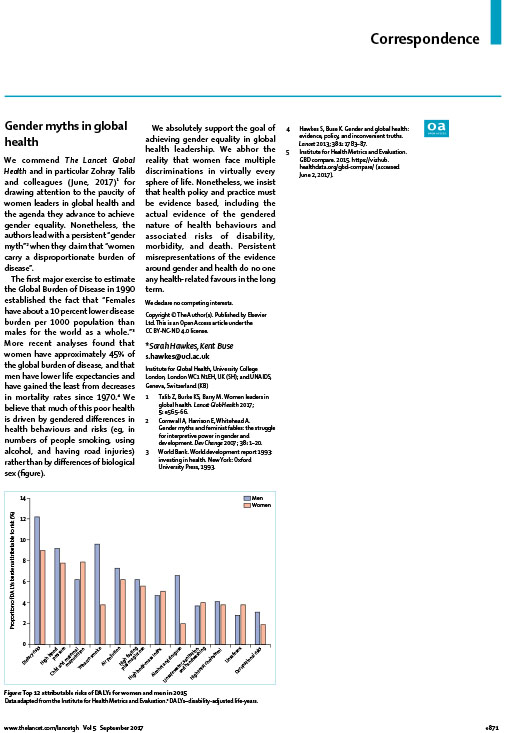
We commend The Lancet Global Health and in particular Zohray Talib and colleagues (June, 2017) for drawing attention to the paucity of women leaders in global health and the agenda they advance to achieve gender equality. Nonetheless, the authors lead with a persistent “gender myth” when they claim that “women carry a disproportionate burden of disease”.
Gender and global health: evidence, policy, and inconvenient truths
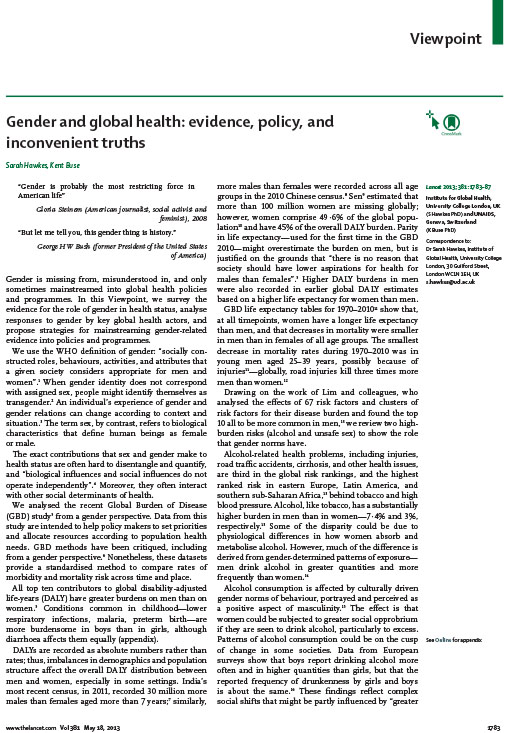
Gender is missing from, misunderstood in, and only sometimes mainstreamed into global health policies and programmes. In this Viewpoint, we survey the evidence for the role of gender in health status, analyse responses to gender by key global health actors, and propose strategies for mainstreaming gender-related evidence into policies and programmes.


